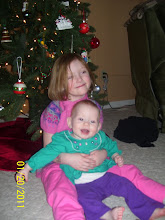National Association for Family Child Care
This association is dedicated to promoting quality
family child care by helping state and local associations through professional
accreditation, advocating for provider’s needs , and to promote diversity
through training family child care professionals. This organization strives to provide
resources to family child care programs in an effort to increase high quality
learning experiences including appropriate curriculum and comprehensive
services for the children and their families.
Their vision is to help increase access to
professional development, compensation that reflects their experience and
achievements, and help providers meet licensing requirements.
This
association interested me because the focus is to help providers increase their
professional development and create high quality childcare. They are an important part of our communities
and provide a large portion of care to children, giving them the opportunity to
increase the quality of care is critical to the families and children within
the communities they serve.
One of the jobs listed is an Observer:
Below is the job description and the skills needed .
|
An Observer
must meet the following criteria:
|
|
1.
|
Be an
individual member of NAFCC
|
|
2.
|
Be at least 21
years of age
|
|
3.
|
Be NAFCC
Accredited if a family child care provider
|
|
4.
|
Successfully
complete required training
|
|
5.
|
Successfully
complete reliable observations once assigned
|
|
6.
|
Meet all of the
requirements in one of the four combinations of education and experience outlined
below:
|
|
|
A.
|
Six semester
hours of study from an accredited college or university covering children
ages birth through school-age.
At least eight
years experience working as a family child care provider or someone who has
worked closely with family child care.
|
|
|
B.
|
Twelve semester
hours of study from an accredited college or university covering children
ages birth through age five. At least six years experience working as a
family child care provider or someone who has worked closely with family
child care.
|
|
|
C.
|
Associate
(two-year) degree in early childhood education/child development or a related
field from an accredited college or university. Courses must include at least
12 semester hours covering children ages birth through age five. At least
four years experience working as a family child care provider or someone who
has worked closely with family child care.
|
|
|
D.
|
Baccalaureate degree in early childhood education/child
development or a related field from an accredited college or university.
Courses must include at least 12 semester hours covering children ages birth
through age five.
|
|
Council for
Professional Recognition
I found this site
during our week 3 application, it’s mission is to improve performance of
professionals. Its vision is to make
sure that all professionals in the early childhood field met the development,
emotional and educational needs of children.
This organization administers the Child Development Associate (CDA)
credentialing Program which helps early childhood professionals in all types of
early child care programs.
I started with my
CDA back in the early 1990’s, I took the classes up at Bemidji State University
once I got this certification I was hired by Head Start as a Home Visitor. it was the beginning of my journey and gave
me a great foundation for my future professional development. It is a great
start for many people when they are looking at the early childhood field.
I found two jobs the
first is an Advisor: (below is the job requirements)
A. PERSONAL
·
Affirm their
ability to relate to people of various racial, ethnic, and socio-economic
backgrounds.
·
Be
knowledgeable about local, state, and national requirements and standards for
child care programs serving children aged birth through 5 years.
·
Be familiar
with the center where the Candidate will be observed and with the needs of
families and children in the community.
B. EDUCATIONAL BACKGROUND
·
Hold a
Baccalaureate or Associate degree from an accredited college or university in
one of the following disciplines:
- Early Childhood Education/Child Development
- Elementary Education/Early Childhood Education
- Home Economics/Child Development
·
The degree
must include, at minimum, 18 semester or 24 quarter hours of coursework in
Early Childhood Education/Child Development, studying children birth through
5years.
C. PRACTICAL EXPERIENCE
Option 1
For those with a BACCALAUREATE
DEGREE, two years in a child care setting serving children from birth to 5
years of age to include: one year working directly with children as a
caregiver, teacher, child life worker, social worker, or similar role, AND one
year facilitating the professional growth of at least one other adult.
Option 2
For those with an ASSOCIATE
DEGREE, four years in a child care setting serving children from birth to 5
years of age, to include: two years working directly with children as a
caregiver, teacher, child life worker, social worker, or similar role, AND two
years facilitating the professional growth of at least one other adult.
The other
position is a manager of Early Childhood
The
qualifications are listed:
Bachelor’s degree or
equivalent; Master’s degree preferred, and relevant supervisory or management
work experience.
2. Effective
decision-making in the context of the Council’s goals/objectives/policies/etc.
3. Strong
supervisory and leaderships skills.
4. Skilled and
timely management of projects and initiatives.
5. Ability to
respect/work well with all levels of personnel.
6. Ability to
analyze and solve problems.
7. Ability to
communicate clearly.
8. Detail oriented.
9. Assumes
responsibility for outcomes; accountability.
10. Excellent time
management skills.
11. Commitment to
the goals/vision of the Council.
National
Education Association (early childhood)
This site
is a great site to find out recent research and current events going on in the
educational field. The jobs listed are
more business and Website work and I truly am not interested in this type of
work. But this site is a great resource
for early childhood professionals.


